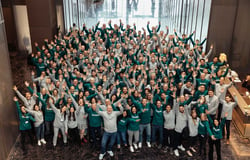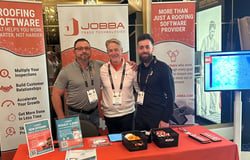A Detection Developer has a clear history of successful contribution to professional detection development projects. They are driven, curious, and results oriented. They are able to manage competing priorities as they relate to improving existing our existing codebase of detections and constantly challenge the status quo. With additional experience and exposure to advanced detection development patterns and projects, they are capable of becoming a Technical Lead within 2 years.
Basic Qualifications
- 5 or more years of professional experience as a Detection Developer
- Experience consists of projects contributing in either Python or YAML
- OS Specific Telemetry (Windows Security/Sysmon logs, Linux)
- Windows PowerShell Monitoring
- SIEM Detections
- EDR detections/signatures
- Sigma and Yara Rules
- Development of anomaly and behavioral based detections
- Tuning and optimization of detections for all the above
- Professional certifications in Security and/or Cloud are required (i.e. CISSP, GNFA, GCFA, GCFE, GREM).
- Experience consists of leading a team of 3 or more Detection Developers while contributing code independently
- Experience leading Agile development teams, preferably with formal Agile training
- Preferably located in Canada or the U.S.
- Nice to have: A clear history of technical influence (public conference talks, papers, etc)
- Nice to have: A clear history of learning and skills development. Regularly helps detection developers develop their skills in a variety of ways.
Nice to have: B.Sc. in Computer Science
Nice to have: Located in the Eastern Time Zone
About the role
You’ll be working as a detection developer on our Detection Operations Team, responsible for ensuring quality and scale of our detection base and presenting actionable detections to our Security Services teams and customers.
Some of your day-to-day responsibilities will be:
- Providing mentorship and technical leadership to the team.
- Developing and maintaining Python and YAML-based detections, software, and systems.
- Research and develop expertise in the various threat surfaces and telemetry available for them
- Propose coverage and efficacy improvements to the detection surface
- Work with team members to develop novel detections and continuously tune existing ones
- Build runbooks, reports and supporting material for detection surfaces
- Collaborating with cross-functional teams to gather requirements and implement detections.
- Writing clean, efficient, and reusable code in Python.
- Conducting code reviews and providing constructive feedback to ensure code quality and maintainability.
- Debugging and fixing issues in existing Python codebases.
- Optimizing application performance and ensuring scalability.
- Participate in the full software development life cycle, building well-designed, testable, efficient, secure code.
- Understand the product and how Security Services delivers the service.
- Develop professional expertise, apply company policies and procedures to resolve a variety of issues. Determine a course of action based on guidelines, and modify processes and methods as required.
- Continuously learning and adopting best practices for code quality, software development methodologies, and programming principles to enhance coding skills and stay updated with industry advancements.
We value a culture of sharing, so every team has the opportunity to share their work with the entire department during our monthly R&D Demos. Once a year we hold a department-wide Hackathon, teaming up across all R&D teams over four days to collaborate and build cool ideas outside the normal project scope. While innovation is the focus, some of these ideas do make it into our products.
About you
You’re a talented detection developer who loves building things and cares deeply about code quality and reliability while optimizing performance. You enjoy coordinating with distributed cross-functional teams. You are constantly adapting to emerging technologies, trends, and best practices. You will build productive internal/external working relationships to resolve mutual problems by collaborating on procedures or transactions, with a focus on providing standard professional advice and creating initial reports/analyses for review by experienced team professionals.
Here are some of the core technologies we use and teach across our detections teams:
- Python
- Sigma
- Suricata
- Wazuh
- Kibana
- Git
You are not required to be an expert in any of these, but you should be excited by the opportunity to learn new things and comfortable with coming up to speed quickly. Any experience with detection development or full-stack development frameworks and practices is relevant and transferrable.
External influence and Training Role Objective
- Be seen as a technical thought leader both internally and externally. Participate and lead internal knowledge sharing workshops, contribute to external publications, lead public events relevant to job role.
- Attend training, seminars or webinars relevant to job role to enhance current knowledge base and skill set in order to improve job performance and efficiency. Attend at least one event a year. The training should not impact job/project deliverables.
Security Requirements
- Conducts duties and responsibilities in accordance with AWN’s Information Security policies, standards, processes and controls to protect the confidentiality, integrity and availability of AWN business information.
- Must pass a criminal background check and an employment verification as a condition of employment.
Location and Travel
- We operate in a hybrid model where some employees work from their home offices, others in-office, and some a combination of both. All employees within a 30 mile (48 km) radius, of an Arctic Wolf office must be present in office 3 days a week. Please ask for specific location requirements during your interview.
- Quarterly planning sessions may be conducted in-person, requiring travel to Waterloo, Ontario, Canada. Ad-hoc infrequent travel (estimate 10%) may be required.
Top Skills
What We Do
The cybersecurity industry has an effectiveness problem. Every year new technologies, vendors, and solutions emerge, and yet despite this constant innovation we continue to see high profile breaches in the headlines. All organizations know they need better security, but the dizzying array of options leave resource-constrained IT and security leaders wondering how to proceed. At Arctic Wolf, our mission is to End Cyber Risk through effective security operations. To achieve this, we believe that organizations must do three key things:







